'Shawshank Redemption' turns 30 — film helped preserve Ohio town's past
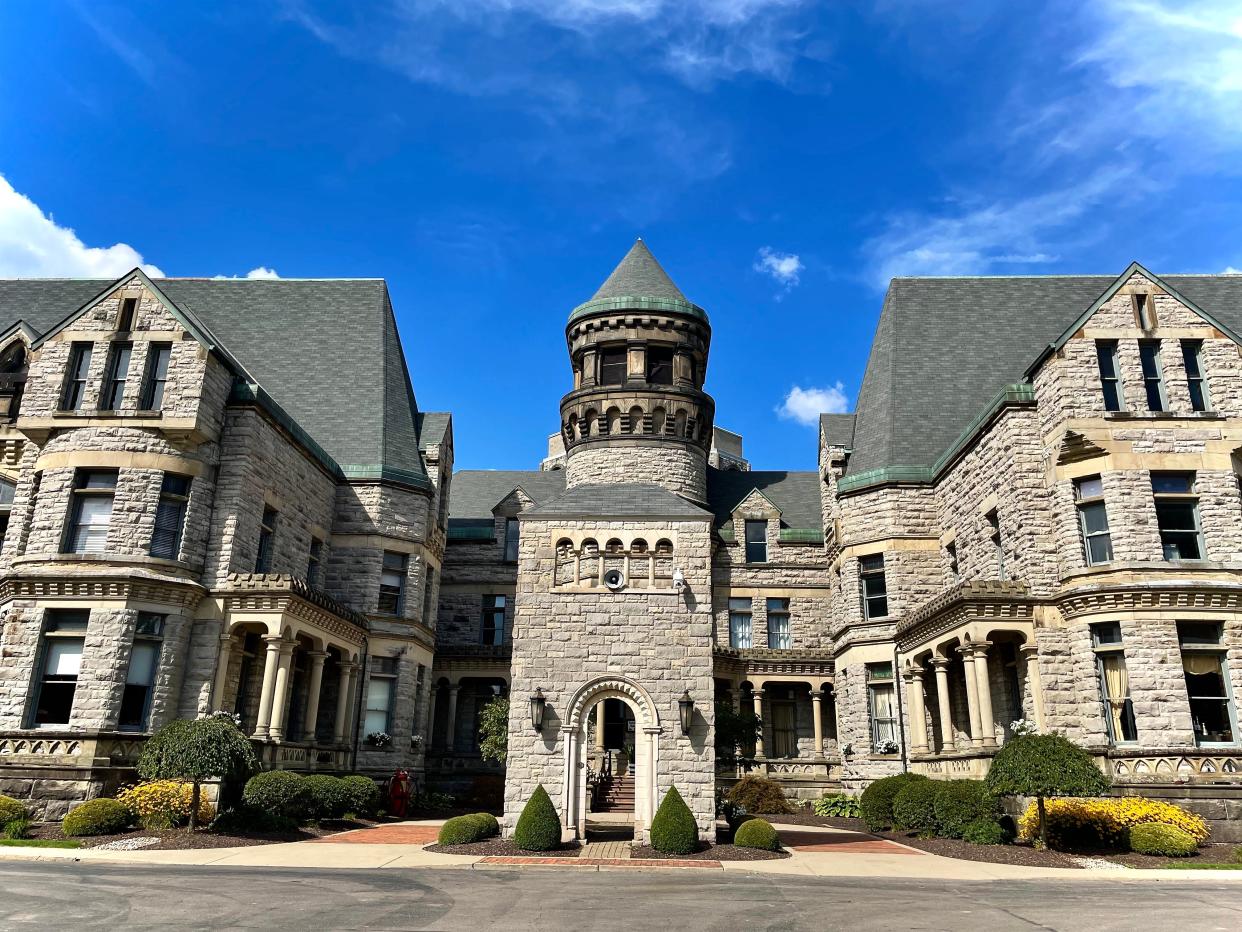
One of the most loved films of all time, "The Shawshank Redemption," turns 30 this year. And one small Ohio town has planned a big celebration this summer.
In the early 1990s, director and writer Frank Darabont was looking for a location to shoot a movie based on Stephen King's short story, "Rita Hayworth and Shawshank Redemption." Darabont, a Los Angeles native who went on to make "The Green Mile," adapted King’s tale for the screen and retooled its title. Starring Tim Robbins and Morgan Freeman, "The Shawshank Redemption" tells the tale of Andy Dufresne (Robbins), who is imprisoned for murdering his wife and her lover (Andy claims innocence), and his deep friendship with fellow prisoner Ellis “Red” Redding (Freeman).
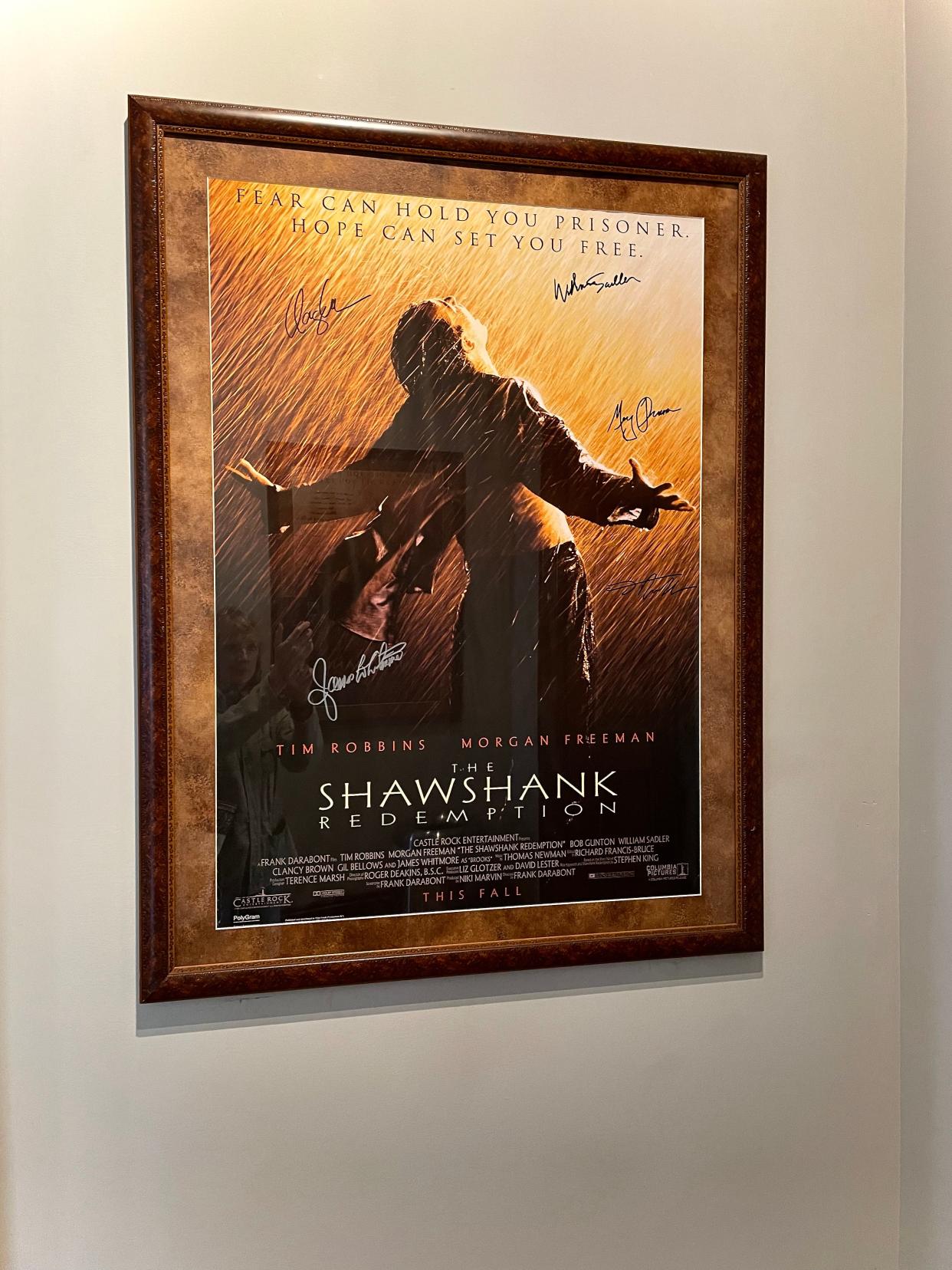
'Most popular movie of all time'
Calling "Shawshank" a prison movie only scratches the surface of this complex, emotional story. But most of "Shawshank" is set in a prison, so Darabont set about finding a large disused building to film in and found what turned out to be the perfect place in the shuttered Ohio State Reformatory in Mansfield, Ohio.
A 30th anniversary celebration of the movie’s release takes place at the Ohio State Reformatory, Aug. 9-11, and will include discussions and forums led by Darabont and cast members — the names of the latter were still to be determined at time of writing. There will be a screening of the film at Mansfield’s Renaissance Theater, where the original premiere took place in 1994.
Upon release, "The Shawshank Redemption" was initially a box-office flop, but seven Academy Awards nominations, including best picture and best adapted screenplay, made it a critical hit. Steadily, viewings grew until "Shawshank" gained the tag of “most popular movie of all time,” as per the IMDB Top 250 Movies chart. "The Shawshank Redemption" took the chart’s top spot in 2008 and has remained there ever since.
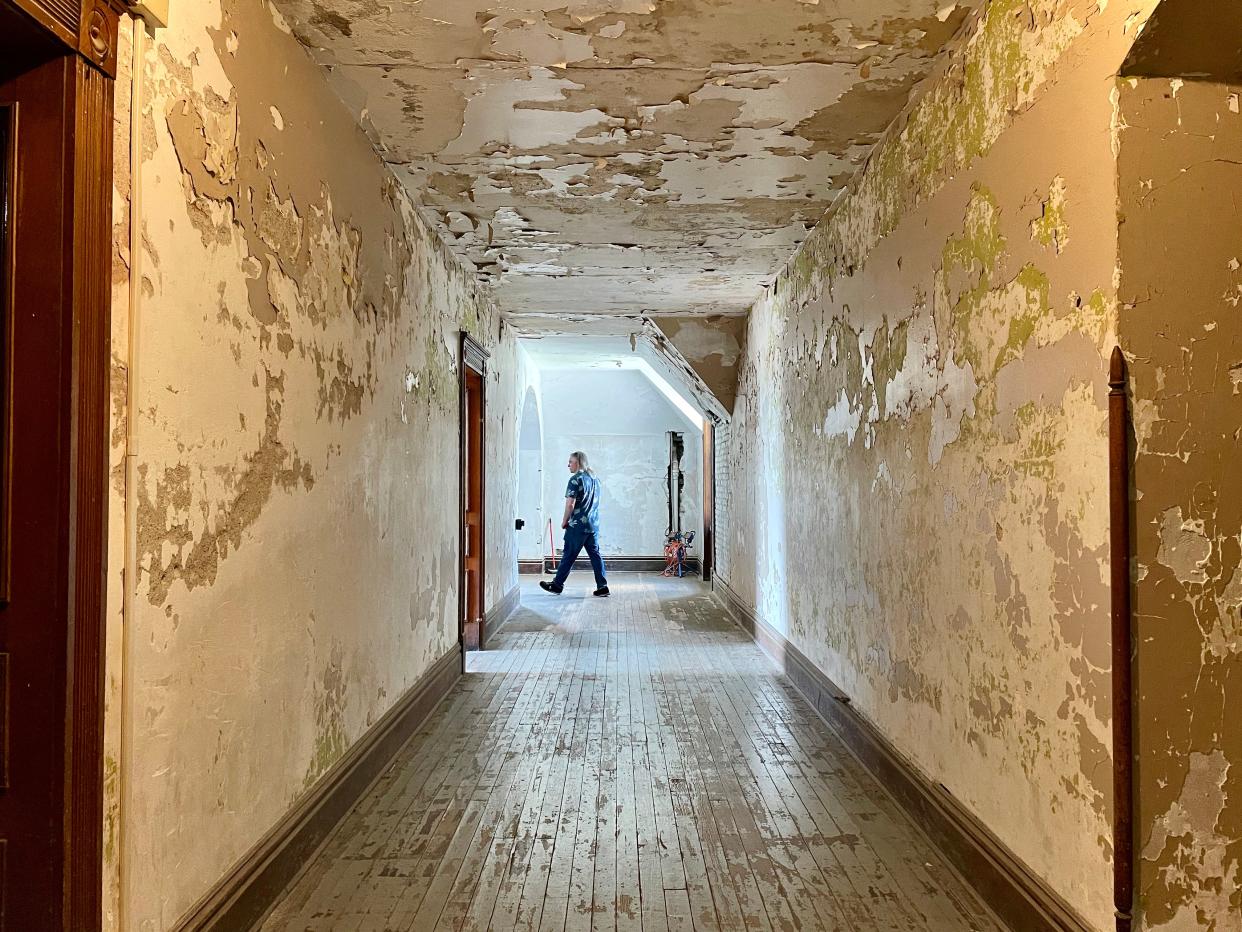
Saving the prison
It is no exaggeration to say that the OSR has become a shrine for "Shawshank" fans. People make a pilgrimage here and that has given this small Ohio town tourism dollars. Without "The Shawshank Redemption," well, the building would very likely be gone now.
Mansfield, a small town in rural north central Ohio, entered the 1990s with two of its main employers closing down: Westinghouse Electric Corp. and the Ohio State Reformatory both shut their doors in 1990, adding Mansfield’s name to the list of beleaguered Rust Belt towns.
By the early 1990s, the reformatory itself was just about falling down. The state planned to bring in the wrecking ball to finish the job and then build a new prison on the site. But many in the town thought the building too beautiful to destroy. Yes, beautiful — high praise for a prison.
Among those was Dan Sekel, a local architect and founder of the Mansfield Reformatory Preservation Society. “It’s important to preserve it. There’s not a lot of places like this. The architecture is so grand,” said Sekel this past winter.
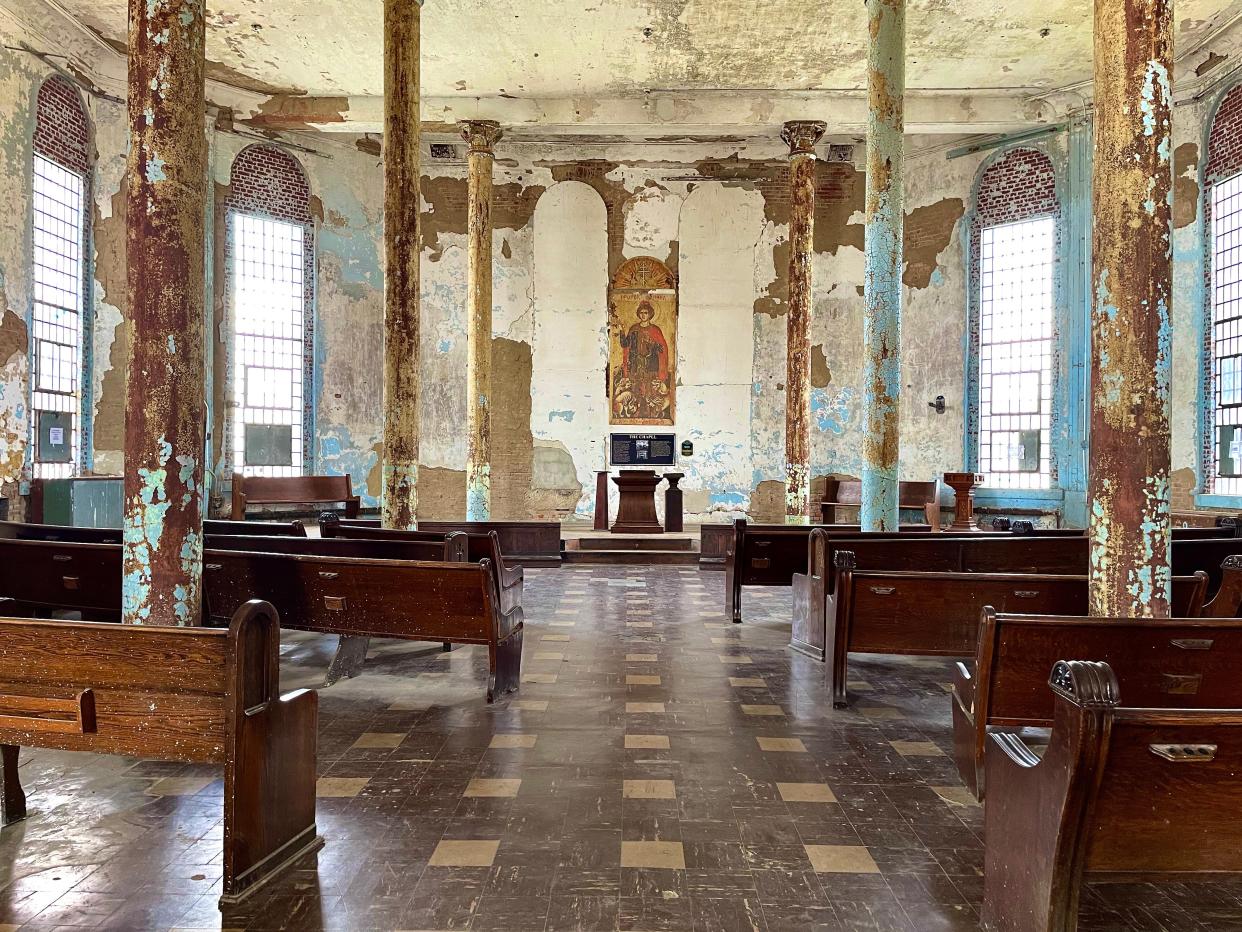
The OSR’s original purpose was also a grand one.
Designed by Cleveland architect Levi Scofield, the Gothic “chateau-esque” building, which is listed on the National Register of Historic Buildings, opened in 1896 as a place to rehabilitate minor offenders via education, even teaching them a trade. For decades the reform program was highly successful, but the state nixed funding in the 1960s. As other Ohio prisons became overburdened, the OSR also became packed with serious offenders, creating the living hell seen in the movie.
Even before it closed, the Mansfield Reformatory Preservation Society began efforts to save the building. Once empty of inmates, the group struggled to stop the state from demolishing the badly deteriorating building. But they had no money to buy it, let alone restore it.
Then, along came Hollywood.
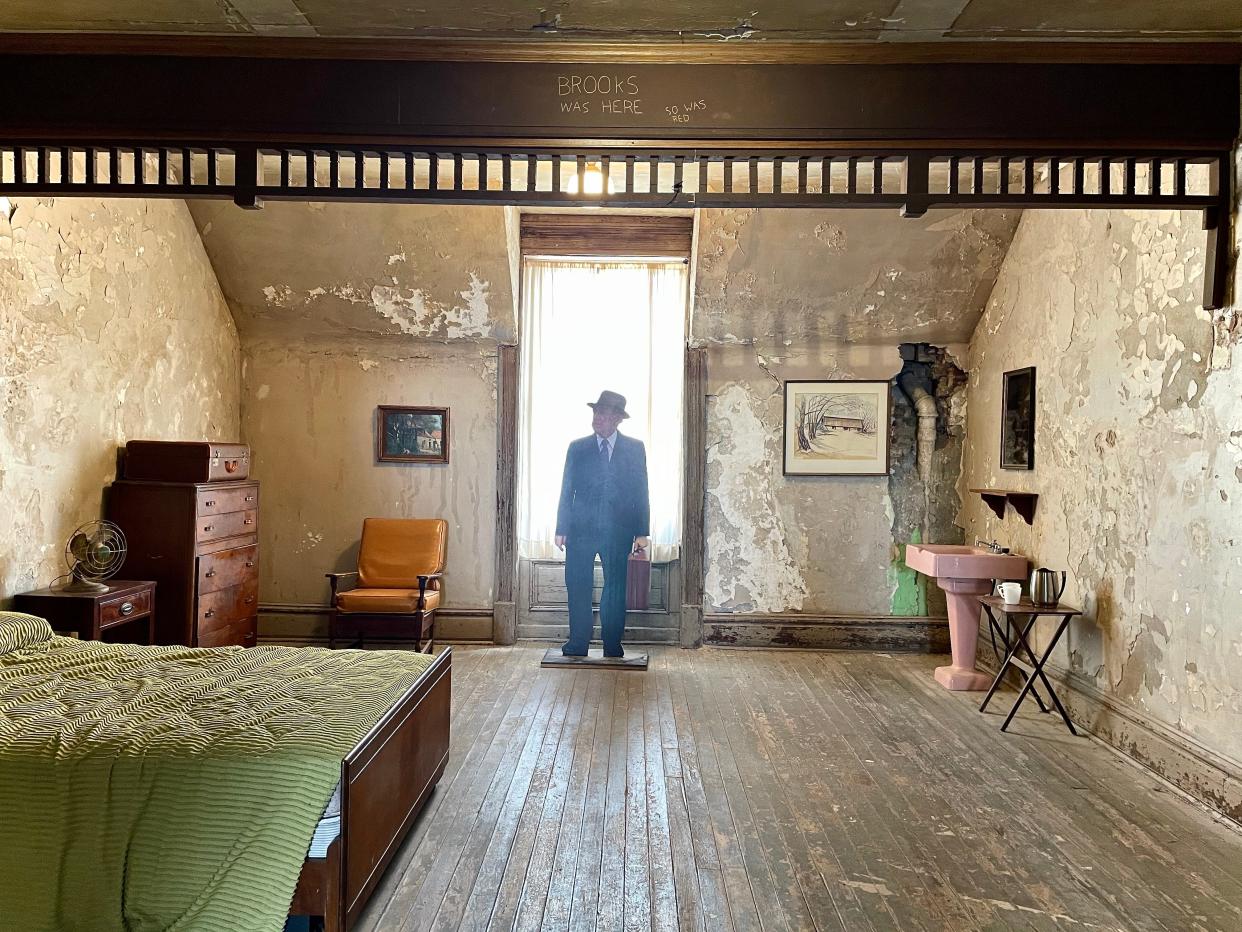
Ready for its close-up
During the sweltering, humid summer of 1993, from June to August, "Shawshank’s" filming took place at the prison and also in purpose-built sets — the cellblock seen in the film was built in a nearby warehouse. Scenes were also shot around town in Mansfield. Locals were hired as crew and as extras. As a thank-you to the town, the movie premiered at Mansfield’s Renaissance Theater in October 1994. Another preservation coup, the lovely old theater stills stands in the quiet downtown, which is also marked by a vintage carousel.
The Hollywood spotlight — and the preservation society’s prodding — caused the state think twice about the building’s value, and it was finally sold to the preservation society for $1. Then came the enormous task of paying for restoration and renovation, which continues all these years later.
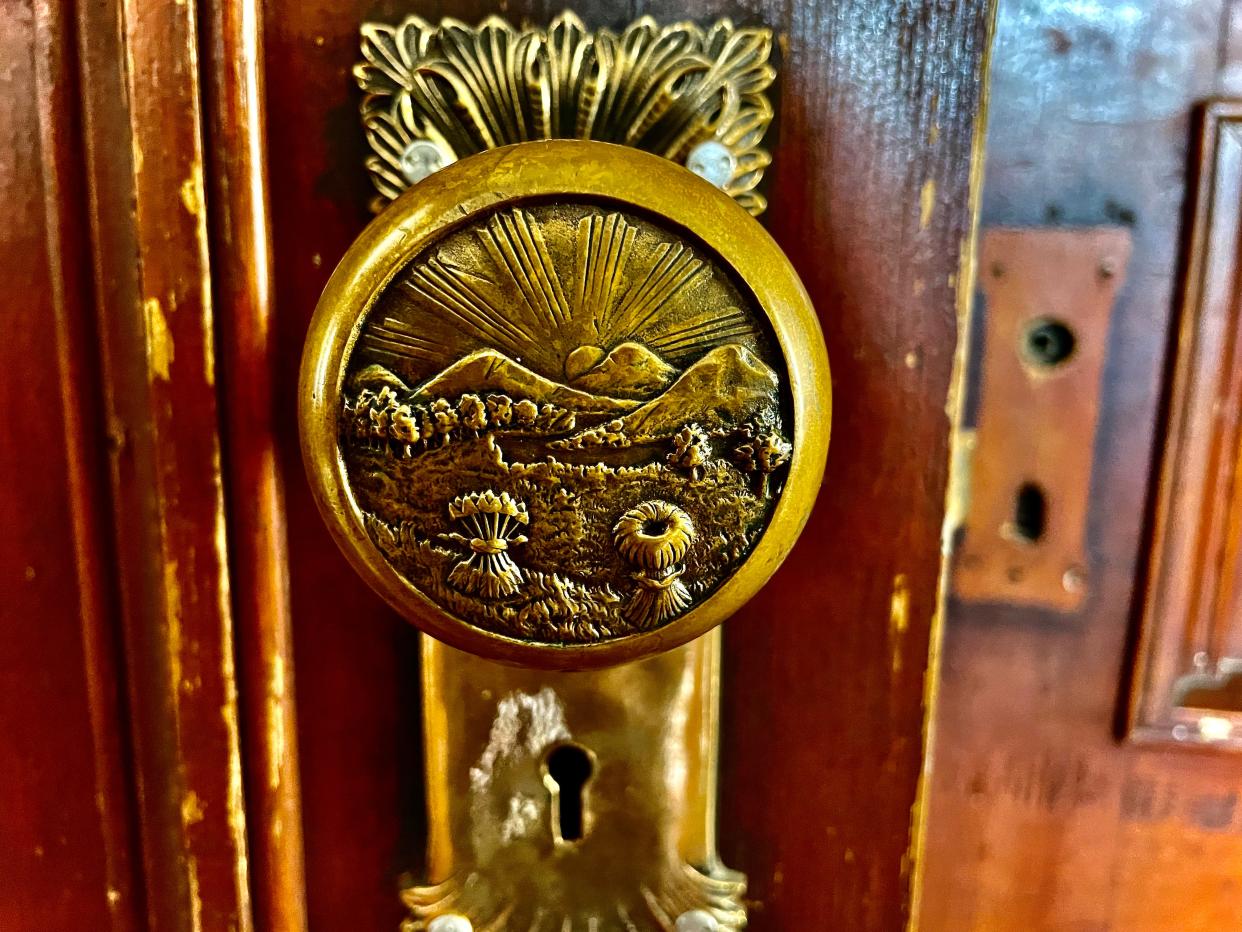
Money trickled in, some of it from Hollywood — some scenes in "Air Force One," starring Harrison Ford, were shot at the OSR. More recently, the prison had a small role in the biopic "Judas and the Black Messiah." But at first, Sekel and his colleagues were hands on working on minor renovations. While they were clearing up junk on the grounds, they noticed people watching them and taking photos.
“People just appeared at the gates,” Sekel recalled. “We wondered why they were taking photos. When we talked to them we found out some traveled here from places like Japan and Brazil, and from all over, because they loved the movie. We realized the building was something other people valued, too. We started doing Saturday tours ourselves when we got on our feet. Then eventually we were able to hire employees,” Sekel says.
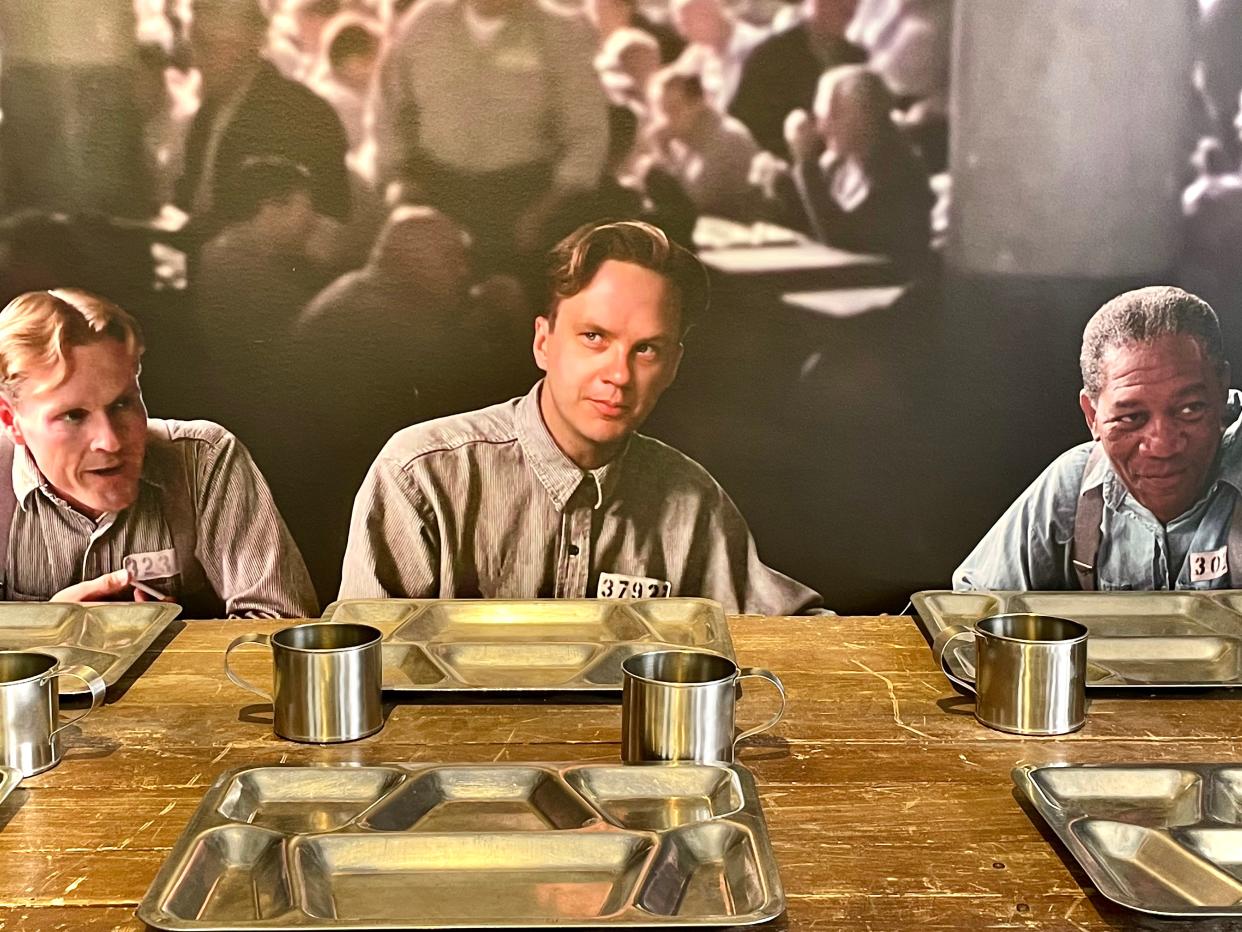
Tourist attraction
Nowadays, the OSR is open for tours and includes a “Shawshank Museum” with lots of memorabilia, including some from Darabont’s own collection. There’s also the Shawshank Trail, which traces the film’s movie locations through the town.
“We do the historical version of what life was like here,” said Dan Smith, associate director at the OSR.
There’s also the spooky version, too. Each Halloween, the prison is turned into one of the most genuinely scary haunted houses — and it doesn’t need much set design. Guides tell of scary encounters with what they can only describe as former inmates.
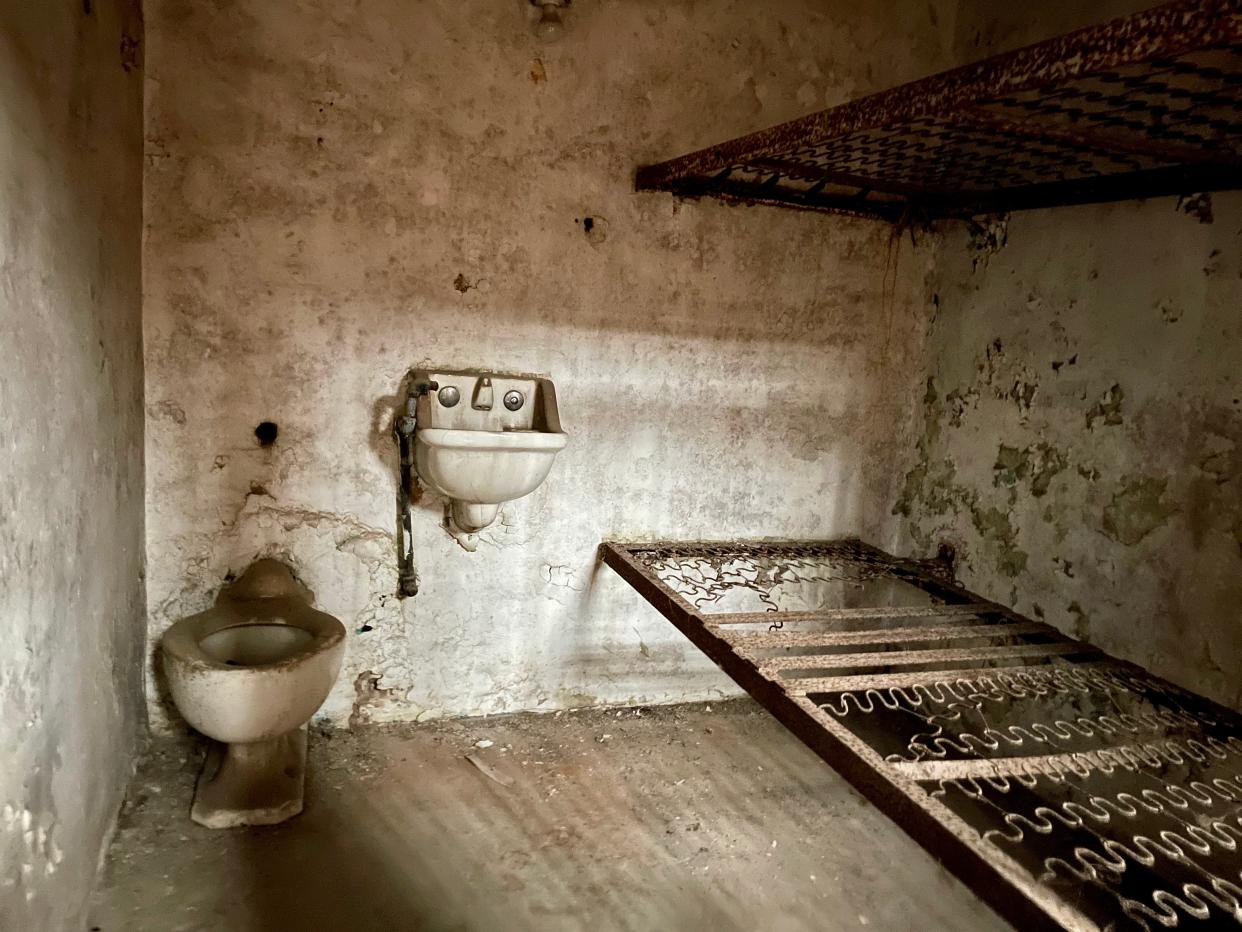
Besides supporting the prison’s ongoing repairs and restoration work, the tours and events provide local jobs and the tourism boosts the local economy. It’s also given the community a sense of pride and identity.
“Saving the prison has saved the town,” said Smith. “No doubt about that. If local leaders had not saved it, it would have been torn down — it would be a parking lot now. But they had a vision of the building as adding a boost to tourism, they saw the economic impact of keeping it.”
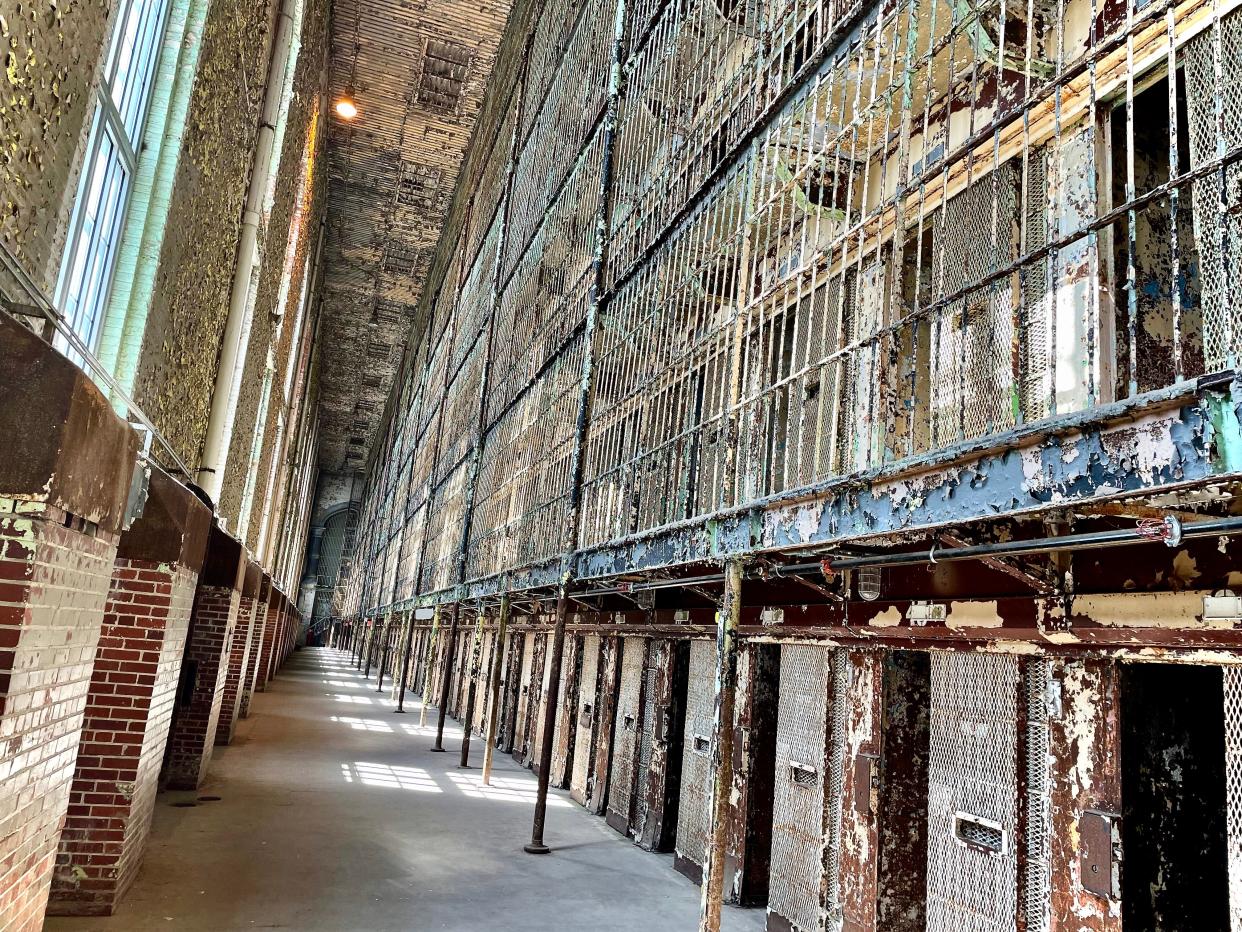
Prison conditions
The property was originally much larger and housed more buildings. It even has its own farm to produce food. Much of that was razed to build the new prison, which stands nearby. What is left is sizable, though. The grand entrance and administration building stands in sharp contrast to the cellblock.
There’s no doubt conditions inside the prison were horrendous. The cells are unbelievably small and barren, and stacked up one on top of another. It feels like pure hell.
The inhumanity is at its worse in the basement where those sentenced to solitary confinement were housed — in the movie, Andy does several stretches in solitary for “disobedience,” but his misdeeds are the kind of actions that are simply heroic in a corrupt system.
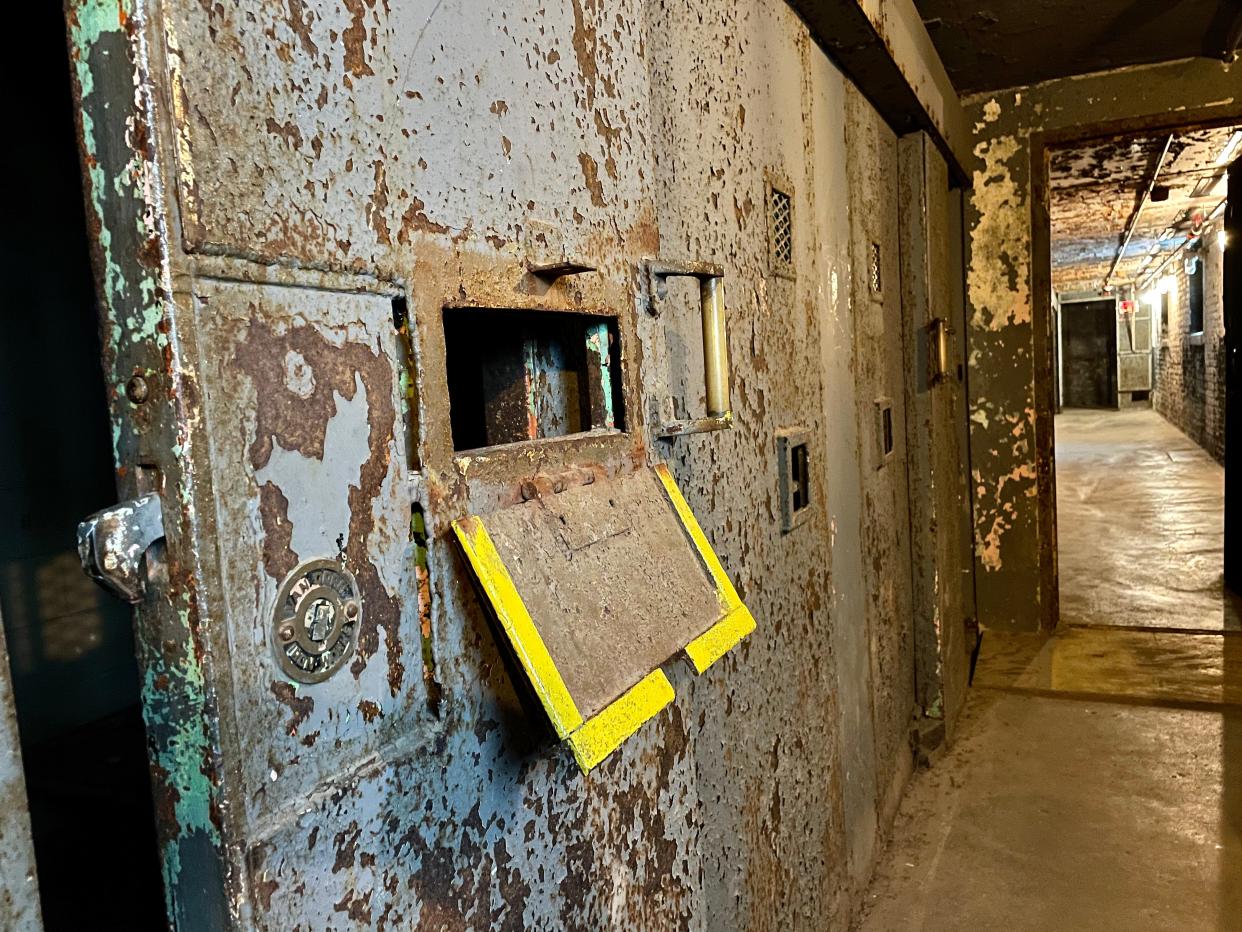
The top floors — some kind of metaphorical heaven compared to those below — offered respite from the hell of daily life here. The recreational room is in dire need of fresh plaster and paint, but is still light and airy. The chapel, even in its disrepair, is quite beautiful.
Beyond the building’s real-life stories, it is "The Shawshank Redemption" that resonates and most hold dear.
“It’s a great story,” said Smith. “People from all over the world love it and visit. Rain, snow, sunshine — there’s always someone outside taking a photo, even if they don’t come in. We are closed today and I just saw about eight people outside taking selfies.”
Stay
Mansfield does offer many good hotel options, but it is bookended by Cleveland to the north and Columbus, an equally short hour or so drive south from the reformatory. In Columbus, Hotel Leveque, Autograph Collection, part of the Marriott empire, is a glorious 1927 historic skyscraper, once the tallest building between New York City and Chicago, and the fifth-tallest building in the world. Rooms have gorgeous bathrooms with amazingly large showers.
The Keep Kitchen & Bar is as casual in its dining as it is ornate in its design, definitely of another era (rooms from $250 per night, 50 West Broad St., hotellevequecolumbus.com). Hilton Columbus Downtown recently expanded to become Ohio’s largest hotel. Located in the Short North Arts District, its twin towers are connected by a skybridge that stretches across the High Street.
For eats and drinks there’s FYR, a “live fire" restaurant, and Spark, a smaller Midwest-inspired joint, and a 28th floor rooftop lounge, Stories on High (rooms from $229 per night, 402 North High St., hilton.com).
Cleveland also has a Hilton of course: Hilton Cleveland Downtown. Awake by the lake at this modern convention center-adjacent hotel tower. Modern and comfortable, with valet parking, an indoor pool and on-site casual dining at the Burnham Restaurant. The location is what makes it special, so be sure to ask for a room or suite with a view over mighty Lake Erie (rooms from $219 per night, 100 Lakeside Ave. East, hilton.com).
Historic Kimpton Schofield also has a great location in the city's Historic Gateway District. Built in 1902, this boutique brand is known for its quirky touches — the lobby has a collection of American Splendor comics, the sardonic autobiographical tomes created by Cleveland native Harvey Pekar. Dine onsite at Betts, a morning-through-night new American diner (rooms from $180 per night, 2000 East Ninth St., theschofieldhotel.com).
This article originally appeared on Telegram & Gazette: Mansfield, Ohio, celebrates 'The Shawshank Redemption' anniversary
